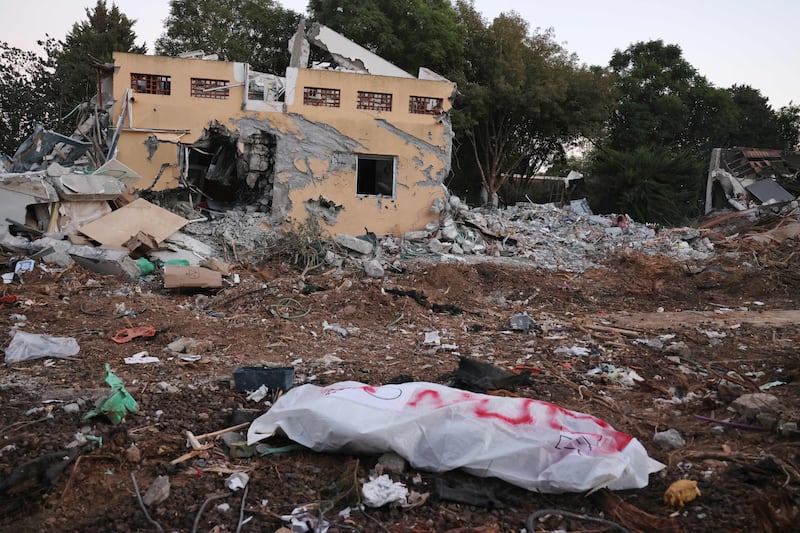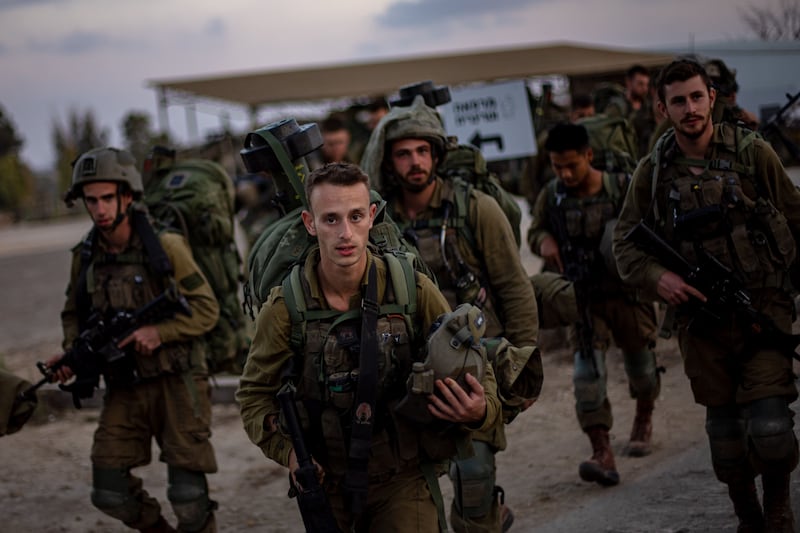Kibbutz Be’eri, a few miles drive from the Gaza border, has become a symbol of what Israelis are calling the Hamas massacres, which occurred when more than 1,000 people – the vast majority civilians – were killed on Saturday in more than 20 communities close to the Gaza border.
The Israel Defence Forces (IDF) opened the kibbutz farming community to the foreign media on Wednesday to see the carnage at first hand. The first thing that strikes you is the stench. It was a smell I wasn’t familiar with: it was the smell of death.
Even though the army has removed most of the bodies it is believed that some remain buried under the rubble. The smell is everywhere.
A large rocket barrage began at 6.30am on Saturday, sending residents fleeing to their bomb shelters or secure rooms. Half an hour later, some 90 well-armed Hamas militants who had infiltrated the Gaza border reached the kibbutz. They killed the security guard at the entrance of the kibbutz and went door to door, killing entire families.
READ MORE
Be’eri’s five-man security team, hearing the gunshots, ran to engage the infiltrators but stood no chance against so many militants.

Men, women and children were shot or stabbed to death. If families locked themselves in secure rooms designed to withstand rocket fire, the militants set the house on fire, choking those inside or forcing them to flee – easy targets for the waiting gunmen.
The charred remains of some homes stand next to other buildings where fierce exchanges of fire took place. They have been almost totally destroyed. The scene is one of utter destruction.
“The symbol of Saturday’s massacre is where we are standing now,” said Maj Doron Spielman from the IDF spokesman’s unit, standing in front of the destroyed buildings.
[ ‘Nothing is normal any more’: War with Hamas reshapes life in IsraelOpens in new window ]
“We found in this area bodies of children and babies that were grotesquely dissected. The madness, the rage and the inhumanity of Hamas caused this. This nation is now going to put on military uniforms and do what we have to do make sure this is never going to happen again.”
An IDF special forces team arrived a few hours after the militants reached the kibbutz but they were soon pinned down. Many hours later, reinforcements arrived. It took a full day of fighting to eliminate all the militants.
An unknown number of residents, adults and children, were seized and taken to Gaza. The bodies of some of the victims have yet to be identified. It is believed about 100 were killed, some 10 per cent of the community.
The survivors have relocated to the centre of Israel. It’s not clear if they will ever return.

On Wednesday, the entire Gaza periphery area was full of troops preparing for the ground offensive. About 360,00 reservists have been mobilised – the biggest draft in Israel’s history. Military convoys continue to make their way towards the border, young soldiers from the special units in Humvee vehicles brimming with weapons, camouflage nets over their helmets, and all wearing ski goggles. Their morale and determination is high despite the looming battle. They know the score: some may not return.
[ How Hamas covertly organised its massive attack on IsraelOpens in new window ]
Some fields have become forward staging posts for armoured personnel carriers deployed neatly in columns, waiting for the order to move. A few kilometres further back from the front, in another field, is an artillery unit, firing off round after round towards Gaza to the west, from where huge plumes of black smoke rise to the sky.
Overhead, helicopters and drones patrol the skies.
The ground offensive may not be imminent but it feels close.






















